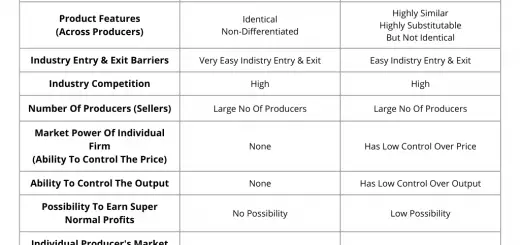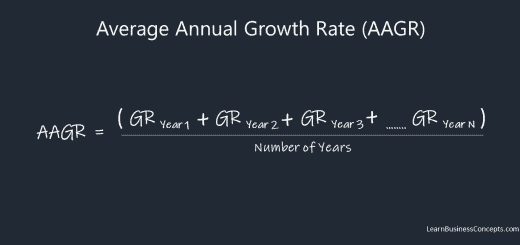Advantages and Disadvantages of Stock Split
What is Stock Split?
A stock split is segregating each existing share of the company into multiple additional shares. After the stock split, the number of shares of that company increases, but the market capitalization (company net worth) remains the same.
When a company grows rapidly by increasing the price of a share gradually, at some point the company will realize that the share price is too expensive for its investors. This is the primary reason for companies to conduct stock splits, which increase the number of total shares and brings down the share price, without affecting market capitalization. Many multi-billion dollar blue-chip companies have done this.
Since a stock split does change the company value, the total dollar value of stocks remains the same. In most companies in the world, the common split ratios are 2:1 or 3:1. This ratio means for each share before the split, each shareholder will receive two or three shares after the split.
Advantages (Pros / Positives / Benefits) of Stock Split
1. Positive Signals to Shareholders / Investors
Usually, a stock split is done by big companies that need to reduce their company share price. Indirectly this represents that the company has grown to a substantial level which share price boosted up to an unaffordable level.
This brings a strong signal to the investors regarding the company’s stability, and how confident the board is for the future of the company. It is usually visible that small investors tend to buy shares after the stock split is done.
2. Increase Liquidity of Shares
The liquidity of a share will reduce when the share price is at a high rate. As an example, if a company’s share price is a couple hundred dollars per share, it will eventually reduce the trading volume.
After the stock split, the share volume increases, and the price per share reduces. This will benefit for the company to improve the share trading liquidity which open ups trading for small investors as well. An affordable level of the share price will attract small investors to trading.
3. Reduces the Spread Between Investor Bid and Ask Rate
Since the reduced share price, the gap between the bid and ask rate is also reduced. This will be beneficial for investors to negotiate the share price quickly since the gap will be less.
Disadvantages (Cons / Negatives / Drawbacks) of Stock Split
1. Could Attract the Wrong Type of Investors
Low stock prices will encourage smaller investors to get into the trade. Most of the small investors are day traders, which are not long-term investors, instead, they sell the shares for a profit margin only.
A stock split could attract these types of wrong investors to the company. The wrong type of investors will not hold the shares if they see a temporary loss in the share price. Instead, they will quickly sell to reduce the short-term loss.
This will be a disadvantage for the company to attract this kind of frequent trader who focuses on day trading. There will be a risk for the company to keep this kind of investors more.
2. No Change in Company Market Value
A stock split does not change the market value of the company. It just increases the total number of shares and reduces the share price to keep the same market value.
Companies will not become more valuable after a stock split. This is because nothing will change in the company’s fundamentals to improve the market value.
3. High Expenses for Stock Split Activity
There is a high level of expenses needed to conduct a stock split. A stock split has various stages from announcement and execution which needed a large amount of cash and will be needed by banks/financial institutions to plan and execute.
This fee versus the benefits the company gets could be controversial, and this activity could be a loss for the company. This amount could be spent elsewhere to generate profits for the company.
4. Can Be Viewed as Meaning-Less Activity
The company could view stock split as a meaningless activity, which no need to put all effort and time just to reduce their share price to match the increased share volume.
It could view as cutting two same sizes of pizzas into 6 pieces or 12 pieces. Regardless of the number of pieces, the total size and flavor of the pizza will remain the same.
Why Do Companies Split Stock?
Companies do the stock split mainly for the following two reasons,
- Decrease the share price – companies mainly split the share to low the market trading price of a share to bring the share price more affordable to the investors.
- Increase the liquidity of shares – since the stock price is low, the liquidity of trading will become high. Investors can trade shares since the per-share price is decreased.
Stock Splits Example
Most investors are more comfortable purchasing if a share value is low comparatively. As an example, the investors feel more comfortable buying 500 shares of a $10 stock compared to 1 share of a $5,000 stock.
The company management can decide to split shares with a preferred ratio. As an example, if the ratio is 3-for-1 then each share held by the investor will have 3 shares in total after the split is completed. As another example, if the ratio is 10-for-1 then each share held by the investor will have 10 shares in total after the split is completed.
Tesla, Google, Shopify, and various other global companies had conducted stock splits. The below article contains comprehensive information about these real-world examples of stock splits,
Key Summary
1. A stock split is segregating each existing share of the company into multiple additional shares.
2. After the stock split, the number of shares of that company increases, but the market capitalization (company net worth) remains the same.
3. Since a stock split does change the company value, the total dollar value of stocks remains the same.
4. Usually, a stock split is done by big companies that need to reduce their company share price.
5. After the stock split, the share volume increases, and the price per share reduces. This will benefit for the company to improve the share trading liquidity.
6. On other hand, The company could view stock split as a meaningless activity, which no need to put all effort and time just to reduce their share price to match the increased share volume.
7. Low stock prices will encourage smaller investors to get into the trade. Most of the small investors are day traders, which are not long-term investors, instead, they sell the shares for a profit margin only.
Learn More with LearnBusinessConcepts.com
- Initial Public Offering (IPO): Explanation, Steps & Examples
- Advantages & Disadvantages of Initial Public Offering (IPO)


